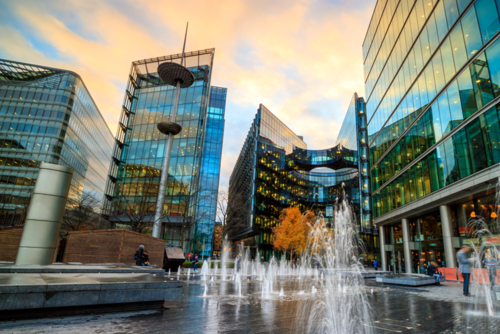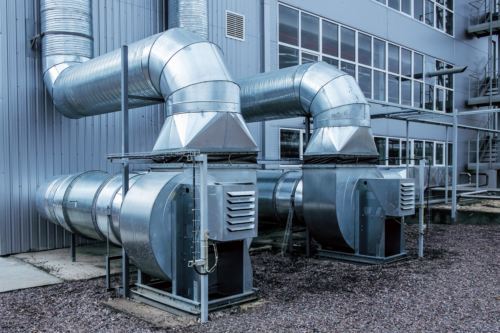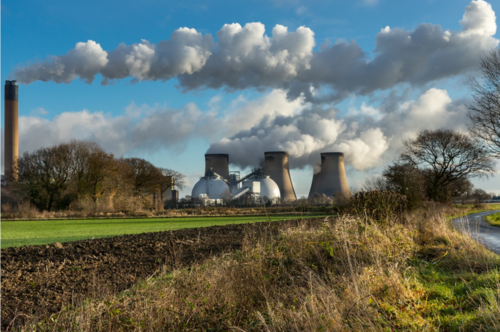Supporting local schools through the biggest health crisis of our time
Compelled by worsening levels of air pollution in the UK,
Evotech launched its specialist Air Quality division, Evotech Air Quality, on
Clean Air Day 2020, amidst the Coronavirus pandemic, to help our customers
create safer working environments and improve confidence in returning to the
workplace. Prior to that time, Evotech, which specialises in building
performance and maintenance, had been, and still is, supporting clients through
lockdowns, in partially closing, and in some cases, mothballing commercial
buildings, whilst keeping them compliant, and then readying them again to safely
re-open to employees and the public. It was during this time that we first
began installing air quality sensors for our clients and, improving the indoor
air quality when required.
However, it soon became apparent that schools were having a particularly challenging time during the pandemic, and we wanted to help them better understand air quality. We especially wanted to support local schools, in the most polluted areas, to monitor both indoor and outdoor air quality, so that improvements could be made to improve classroom environments and the wellbeing of pupils and teachers.
So, we teamed up with our partners Airthings and Airly, with the aim of installing indoor and outdoor air quality sensors and providing technical support to interpret the data and advise on the best solutions. We wrote to every school in Calderdale on Clean Air Day this year, to launch our #CleanAirSchools campaign, and received a great response. We chose a number of schools to support that are sited on busy main roads and which we felt had the greatest need.
Over the Summer, our specialist engineers installed the award winning, Airthings indoor air quality monitoring sensors, along with an Airly outdoor air quality sensor, at local schools in Calderdale and Greater Manchester.
The devices have been calibrated, and our air quality team collected baseline data, ready for pupils returning to school. Our specialists will continue to evaluate the data and provide ongoing air quality alerts and monthly reports, helping the schools improve their air quality to provide safer, healthier school environments. Where ongoing indoor air quality issues are identified, our specialist engineers will develop a plan for improvement, from improving existing mechanical ventilation systems, to the installation of air filtration units.
The Department for Education recently pledged to provide 300,000 carbon-dioxide monitors to state schools in England to help identify where ventilation is limited, and viruses may more easily spread.
But are carbon dioxide monitors enough?
Teachers' leaders have previously said the likely uptick in Covid cases at the start of a new school term means that ventilation should not be the only measure in place to curb the spread of the virus.
Both the Airly and Airthings sensors monitor multiple air pollutants in addition to CO2 allowing building occupants to tackle other sources of pollutants that can be damaging to health, especially the lungs and long term health of children, who breathe more rapidly than adults and whose lungs are not fully developed.
Whilst high levels of CO2 indicates that a room needs additional ventilation, there are other pollution elements that should be addressed, and which may become regulated in the near future. In fact, in September the World Health Organisation (WHO) adjusted almost all of its air quality guidelines downwards, slashing recommended safe limits in some cases by 75%, and warning that exceeding the new levels would pose significant risk to health.
This means that across Europe and the UK, legal limits for NO2 are now four times higher than WHO recommendations, while legal limits for PM2.5 are now four to five times higher than the new guidelines.
Recent studies of COVID-19 in several countries have identified links between air pollution and death rates, and more recent research has concluded that a small increase in air pollution leads to a large increase in the COVID-19 infectivity and mortality rate in England.
Outdoor levels of CO2 are around 400ppm, and indoors, consistent levels of less than 800ppm is likely to indicate a space is well ventilated. It is recommended to keep CO2 levels around 800ppm in classrooms, and where readings are consistently over 1500ppm, action should be taken to improve ventilation.
In our quest for energy efficiency and a reduction in carbon emissions, we have made our buildings more air tight, preventing natural ventilation. In short, many of our buildings simply cannot breathe! Of course, many commercial buildings bring in fresh air through mechanical ventilation units, and now the latest state of the art systems can automatically adjust airflow to suit the specific needs of rooms and zones, via building management systems, when they are linked to a network of air quality monitoring sensors. For older systems air handling units should be set to maximise outdoor air over recirculated air. It should be noted here that, some AC units only recirculate air and do not add fresh air to the mix. If your building has this type of system you should look to upgrade or follow the guidance below.
But how do we safely improve ventilation, when the only method is the opening of windows and doors, and outdoor pollution levels are high?
In these instances, high quality air purification and
sterilisation units can remove contaminants from the air, including bacteria
and viruses, making for safer indoor spaces. They cannot, however, reduce or remove
CO2, so it’s advised to open windows regularly, avoiding rush hour and the
school run at both ends of the day. The introduction of fresh air will reduce
CO2 which can be detrimental to health in its own right, and the filtration
units will deal with other pollutants including PM, NO2, VOCs, mould spores and
viruses.
Before purchasing an air purification unit check that it incorporates a HEPA13 filter as a minimum, that will capture 99.9 percent of particulate matter down to 1µg/m³ (micrograms per cubic meter of air), and preferably also uses a high grade activated carbon filter to reduce chemical pollutants (VOCs), NO2 and other gases. Some units also use UVC light to kill 99.9 percent of airborne bacteria and viruses by damaging molecules in proteins, although these are mostly used in a healthcare setting.
The work we are doing with local schools is in its infancy, but already we have seen a rise in poor air quality in all the schools we are working with, as children returned to school in September and traffic increased on roads around them. Our air quality data and engineering specialists are working together to advise each school on a course of action to improve their environments.
Part of our #CleanAirSchools campaign focuses on educating children and teachers on air quality, what pollutants are in the air and where they come from. The data collected from the sensors can also be used in helping schools encourage parents to use alternative methods of travel and support campaigning for school streets, anti-idling projects and air purifiers. Children are our future after all, and I encourage other businesses to join forces to support the health and wellbeing of their local children. Together we can make a real difference to future generations.
Evotech Air Quality is also supporting other early years providers, schools and colleges to put in place measures to help minimise the risk of COVID-19 transmission, with discounted state of the art, air quality monitoring sensors and support services.
For more information on air pollution, solutions and our #CleanairSchools campaign visit www.evotechairquality.co.uk
As published in Air Quality News
Return to topLatest Articles
How the Internet of Things (IoT) is revolutionising building energy efficiency
Read More >Choosing the right green building certification
Read More >How AI technology is helping reduce energy consumption and carbon emissions in commercial real estate
Read More >What will be the response to spiralling energy prices and will it benefit or harm air quality
Read More >



